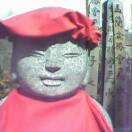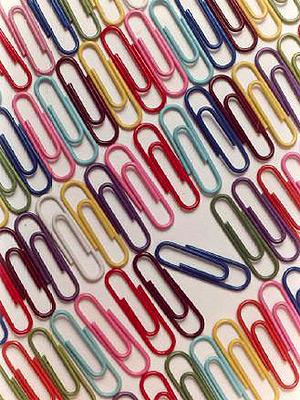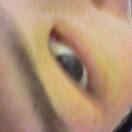 |  |  |
 |
 It was my first complete workfree day in more than a month, and I wanted to enjoy the day with the lovely C., who recently moved into my house. She is a medical student, and wanted me to spend the day donating blood, and doing other medical type shit. The blood donation thing scared me a little, I must say, but I decided to give her plan a try. In the meantime, we spent a lot of time cruising the busy shopping streets of Ueno, visited Tokyo University nearby, and saw the first cherry blossoms of the season. It was my first complete workfree day in more than a month, and I wanted to enjoy the day with the lovely C., who recently moved into my house. She is a medical student, and wanted me to spend the day donating blood, and doing other medical type shit. The blood donation thing scared me a little, I must say, but I decided to give her plan a try. In the meantime, we spent a lot of time cruising the busy shopping streets of Ueno, visited Tokyo University nearby, and saw the first cherry blossoms of the season.
But even before that happened, we checked out a cute little red temple nestled beneath the Nike advertising signs and toylike buildings in one of the most toylike neighborhoods on Earth -- Okachimachi.
Just like Oniko, I have spent ages looking for Tokudaiji Temple, with no luck. It is easy to see from the train as you approach Okachimachi Station, and looks cool with its red painted wood contrasting with the Nike and other advertising billboards looming brightly above it. Very Japanese in this mix of the new and old, the spiritual and the material. As Oniko said: "The temple itself is raised a floor or so above the ground level in this area and surrounded by commercial buildings. You have to go up a flight of stairs from the street to reach it; this is why it's so visible from the Yamanote train line, which passes by the temple a story above it... but it's also what makes the temple so difficult to find while wandering around at ground level, eh?
After hanging around Tokudaiji for a couple of minutes we moved on, into the ever thickening streets, to have some Korean food in Ameyokocho. We checked some discount shops for cheap Seishun 18 Kippu tickets, briefly considered hitting one of Ueno's blue movie joints to watch a porno, but I was feeling a little prudish. We moved on instead to Ueno Park, where a couple of sakura trees had beaten the late March rush, and flowered early. Crowds of enraptured Japanese milled around them, snapping busy photos. I was bored; the park was oppressive with crowds. Besides, I have walked through that park a million times before, so I suggested we move on to C's university, conveniently situated just up the road in Yushima. It was not just any university, mind you, but Tokyo University --
Tourists are so dumb -- they always go to the same places, where they are surrounded by other tourists taking dumb photos of things which have been photographed, by other people, a million times before. I prefer a little more originality in my ramblings! While Ueno Park was packed with tourists during doing tourist things like rowing on the dirty little lake on that Spring Equinox, the nearby Tokyo University was deserted. It was also much more interesting, with a couple of attractions in its own right. It even boasts a National Treasure -- the Akamon (Red Gate) near Todaimae Station, originally built in 1827, when the daughter of the 11th Tokugawa Shogun, Princess Yo, was married to the head of the Kaga-han (Kaga fief). Though its formal name is the Kaga-han Kamiyashiki Goshudenmon, the gate is more familiarly known as the Akamon due to it's rich red lacquer finish. The area around the university -- Yushima -- featurs "rolling streets and alleys, historic stairways, old-fashioned Japanese-style houses mixed in with modern Western-style buildings", according to one online real estate agent. A little down the road is Korakuen (Tokyo Dome). Yushima is also famous for Yushimatenjin, a shrine dedicated to the god of scholarship, Michizane Sugawara. Students go there to pray for good results in their exams. The area is the hub of Tokyo's medical infrastructure, which explains the high number of ambulance sirens which can be heard there, at all hours of the day and night. Anyway, after messing about up at the university for a while, enjoying the warm spring air, it was time to head back down into town and donate some blood. I was a bit nervy about this part of the day and the consequences (such as feeling weak afterwards), but C. was insistent. I had to give blood -- it was my duty! In the end it actually turned out to be a fun experience. The blood donation center was located on the fourth floor of a narrow building on the packed streets of Okachimachi, overlooking the park. To keep our energy levels up there was a whole spread of free drinks, cookies and Japanese rice sembei. As C. pointed out, the center would make a cool retreat in the savage heat of summer, with its ample air-conditioning, and there was a whole mini library of manga classics to entertain the donors while they waited for the needle. When it was time to donate blood I got to lie in a bed with a little airplane style TV, with speakers set into the pillow. If this is what Japanese hospitals are like, I want to spend some time in them! It was so much fun watching a TV program about the World Expo in Aichi, that I almost didn't notice the 400ML of life juice being slowly drained out of my arm, and sucked into an ever growing blood pack. It sounds strange to say it, but I actually enjoyed giving blood! So much so that I decided to celebrate by drinking 10 or so beers back at home. The next morning, as I made my way to the Indian Embassy to apply for a tourist visa, the weakness caused by blood loss caught up with me, and merged with the excessive alcohol consumption to produce one mother of a hangover. It took two days before I felt myself fully recovered. Nonetheless, one further consolation for the agony and stress of giving my life blood was that the nurses were able to tell me my blood type, which is actually a good thing to know in Japan. People in Japan are always asking me my blood type, which is kind of the same as asking someone their starsign in another country. The Japanese mania for bloodtypes apparently begun in the 1930s. The idea began when some in the west were touting the idea that the asian peoples were more closely related to animals then humans, or lower on the evolutionary chain, since type B blood was the predominant blood type in asians and animals. As ludicrous and unscientific as this idea was, it was insulting to say the least. Modern science disproves this obviously faulted idea. In the 1930's Furukawa Takeji (1891üE940) set out to disprove this notion and a new idea was born. However, the idea of personality traits being influenced by blood type remains. Companies in Japan even had divided workers by blood type. Here are the general ideas of each blood type. The Rh factor plays no role in the blood type/personality idea:
Type O: Type O's are outgoing, and very social. They are initiators, although they don't always finish what they start. Type A: While outwardly calm, they have such high standards (perfectionists) that they tend to be balls of nerves on the inside. Type A's are the most artistic of the blood groups. They can be shy, are conscientious, trustworthy, and sensitive. A is most compatible with A and AB. Type B: Goal oriented and strong minded, type B's will start a task and continue it until completed, and completed well. Type B's are the individualists of the blood group categories and find their own way in life. B is most compatible with B and AB. Type AB: Type AB's are the split personalities of the blood groups. They can be both outgoing and shy, confident and timid. While responsible, too much responsibility will cause a problem. They are trustworthy and like to help others. AB is most compatible with AB, B, A and O.
|
| ||||||||